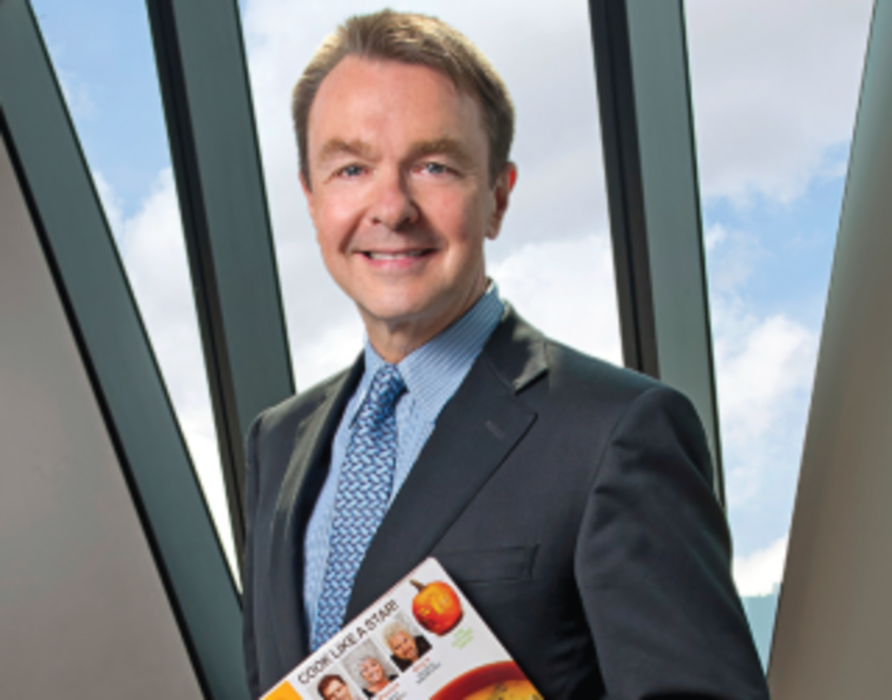Digital or die. That’s become the watchword of print brands, urgently harnessing the latest innovations — from social media platforms to smartphones to the iPad — to refashion their businesses for a new media age. But at Hearst Corp., publisher of magazine titles such as Good Housekeeping, Cosmopolitan, Seventeen and Esquire, digital isn’t just a shibboleth: it’s a crusade.?
“While we believe the printed magazine, especially our kinds of magazines, will be read by generations to come both in the U.S. and the global marketplace, we also will be unbound in our thinking about how we will step into the digital world and how print and digital can work together,” says Michael Clinton, president, marketing and publishing director of Hearst Magazines, who has oversight for the company’s 19 magazine publishers as well as digital, tablet, corporate sales and marketing, brand development and ?advertiser e-commerce initiatives. ?
While famous for print, Hearst lately has made headlines for a raft of digital developments. They include the expansion of its global digital marketing shop iCrossing in Latin America with the acquisition of Santiago-based agency Wallaby Group; the expansion of a pact with Amazon.com that made it Hearst’s largest third-party seller of print subscriptions; the conversion of all its websites to HTML5, optimizing their mobile functionality; and the opening of The App Lab at Hearst Tower in midtown Manhattan to showcase the company’s latest technological innovation and serve as a think tank for digital devotees. ?
Hearst isn’t merely paying lip service to digital. At the paidContent Advertising conference in New York in September, Clinton’s boss, Hearst Magazines president David Carey, said he wants to move Hearst’s digital model away from advertising dependence and toward 50/50 equivalence with revenue from consumers.?
Much of Hearst’s digital emphasis has also involved ?integrated marketing campaigns, including a partnership with Infiniti that tied in titles such as Harper’s Bazaar and Town & Country as well as the cable channel Food Network, Hearst’s own partner in Food Network Magazine. Meanwhile, it teamed with jewelry brand Hearts On Fire to integrate magazine inserts with an online sweepstakes. Other new initiatives include menswear e-commerce site ?Cladmen.com, a tie-in with Esquire, and GiftingGrace.com, linked with Good Housekeeping and O, The Oprah Magazine. Hearst gets a cut of revenue from goods sold via the sites.?
“This is the magazine out of the 21st century, with a lot of touchpoints to give the reader a chance to experience the brands in different ways to purchase — and we will be able to track who purchased what from where,” says Clinton. “In a world of clutter and overload, it is established brand names that help a marketer get closer to the consumer. We’re finding more and more that marketers will pay to get closer to that consumer.”?
Despite Hearst and the industry’s digitally focused vicissitudes — and despite the bleak headlines about the death of print — make no mistake: Print remains the once and future (immediate future, anyway) king of the Hearst castle. ?
Consider the company’s reported $890 million acquisition this past spring of magazines including Elle, Woman’s Day and Car and Driver from France’s Lagardère SCA, making Hearst the second-largest magazine publisher in the U.S. (behind Time Inc.) with a total print circulation of 30.4 million. Following the success of its Food Network pact, Hearst in October launched a magazine around another cable brand, HGTV. Among a dozen international launches this year are Cosmopolitan in Singapore and Good Housekeeping in the Mideast. ?
Print is not only Hearst’s biggest business — it remains an integral part of its direct marketing efforts. In 2012, it will send out 70 million pieces of direct mail, and that’s only new customer solicitations, says EVP and general manager John Loughlin, directly responsible for the company’s digital businesses and consumer marketing. Loughlin says Hearst now has 174.2 million consumers in its database, up from 55 million five years ago. It boasts 81.1 million mailing addresses and 75.9 million deliverable email addresses.?
“We’re getting to the point where the database functions as an orchestra conductor: The horn section may be direct mail, the strings are email, and percussion is a message delivered to the customer when they visit one of our sites,” he says. “Direct marketing activity is no longer linear.”?
As for Clinton, he doesn’t just shepherd some of the planet’s best-known magazines: He has personally traversed a good chunk of this mortal coil. When he spoke with ?Direct Marketing News in early September, he had just returned from Australia, where he ran the fourth of seven marathons he aims to complete across all continents. His fifth photo book, “Global Remains: Abandoned Architecture and Objects From Seven Continents,” came out in October. He also serves as president of the trade association MPA — The Association of Magazine Media.?
Back at home base, Clinton, says Carey, “understands how to look at our brands as more than just magazines and see boundless opportunities to create new revenue streams.” Speaking of his juggling act on behalf of Hearst and the industry, Carey says, “I’m not sure how Michael does it all, but I’m thankful he does it here.”








